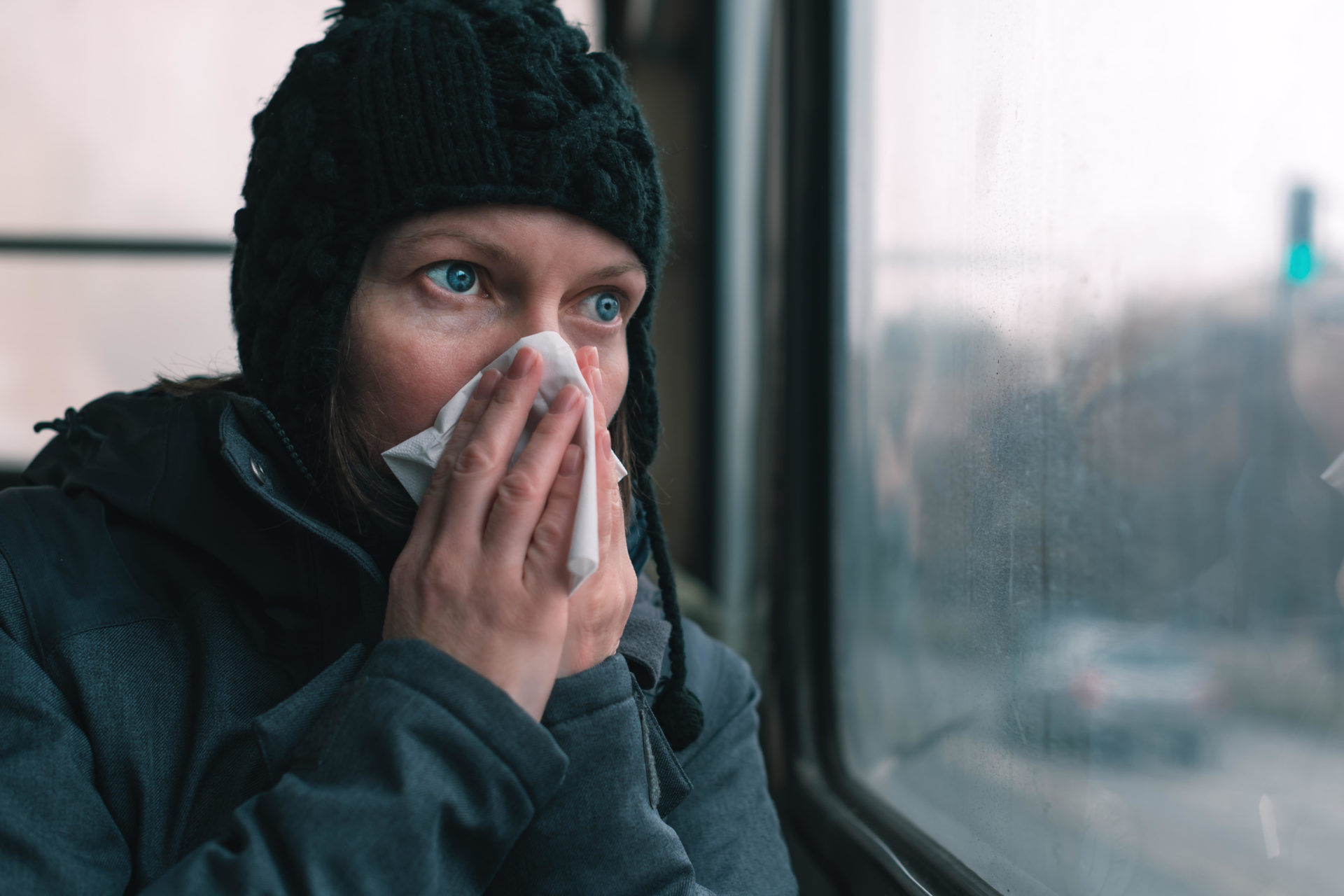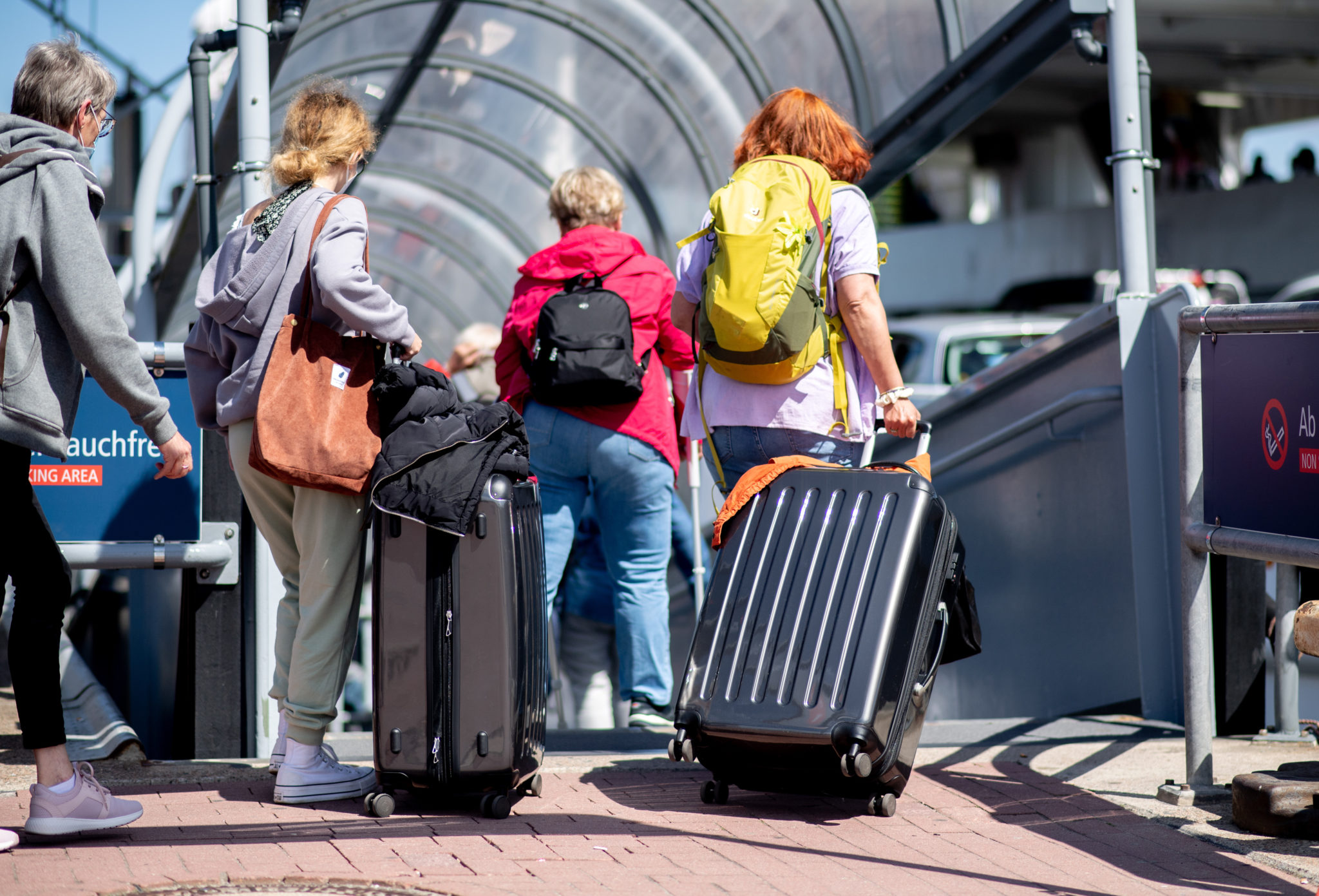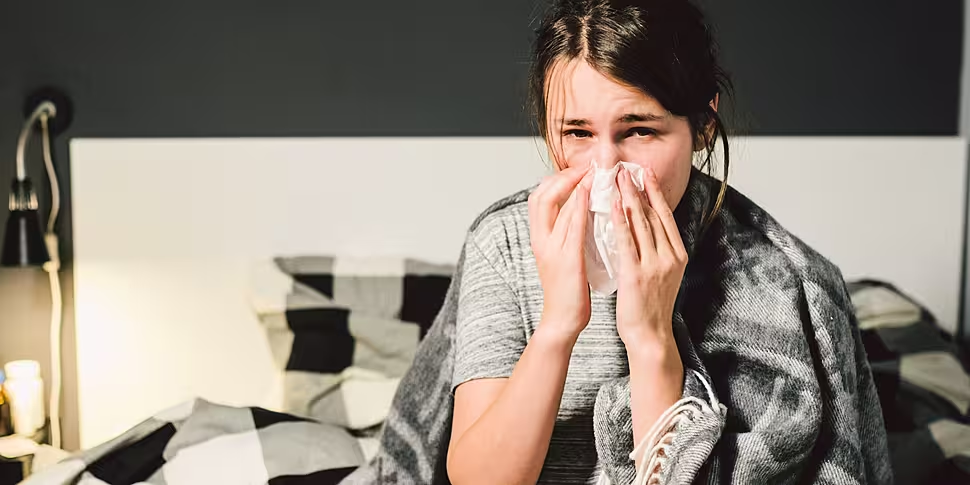The number of viral infections is increasing with colds, COVID and tonsillitis on the rise.
There have been 650 cases of COVID-19 in the past week, according to the latest HPSC data, with 360 people hospitalised.
Almost 40 influenza cases have been reported with seven hospitalisations.
GP Dr Brendan O'Shea told The Pat Kenny Show there are lots of different infections around.
"All the usual things plus COVID are around, and that's the totality of seasonal viral illnesses, the hay fever crowd are in difficulty," he said.
"That's the relaxed answer - then there's a very forensic scientific answer.
"[This answer] reflects that fact that over the last decade we've got evermore precise and scientific about naming every single dreaded organism that's just about to leap upon us.
"That makes for a very worried existence".
 Woman blowing her nose into paper handkerchief on the bus on a cold winter day. Image: Igor Stevanovic / Alamy
Woman blowing her nose into paper handkerchief on the bus on a cold winter day. Image: Igor Stevanovic / AlamyDr O'Shea said people should be somewhere in the middle and explore "how we can be practical and pragmatic".
"What's especially transmissible and what everybody gets is viruses; droplets spread, we know that inside out," he said.
"For the majority of people, for 19 out of 20 people, it's a 10, 12 [or] 14 days self-limiting illness.
"The first five or seven days are usually the worst - temperature, snuffles, cough and loss of appetite.
"In that phase when it's purely viral, usually the patient tends to respond reasonably well to paracetamol.
"It doesn't make it go away but if the symptoms get easier on paracetamol that's a good sign".
Fluids and infections
Dr O'Shea said another "really good sign is fluid intake".
"For smaller children, toddlers and infants if they're taking at least half the usual amount over 24 hours - plus they're in reasonable form and responding to paracetamol - that's a very good indication that it's alright to manage it on a day by day basis," he said.
"Especially for most kids who don't have complex medical backgrounds".
Dr O'Shea said parents who are concerned should talk to a pharmacist, GP or clinic.
When are you most infectious?
Dr O'Shea said people will be infectious for a number of days before developing symptoms.
"During that first five or seven days - the days of coughs, snots and spluttering - you're highly infections," he said.
"You're radiating virus particles and droplet spread.
"So all the catechism we learnt around social distancing is relevant to that - and especially if you happen to be in contact with people who are vulnerable."
 Tourists walk with their luggage, 3-7-21. Image: Hauke-Christian Dittrich/dpa
Tourists walk with their luggage, 3-7-21. Image: Hauke-Christian Dittrich/dpaDr O'Shea said there is "no absolutely right answer" about wearing a mask when on a plane.
"The flying public now has very substantial levels of immunity against COVID," he said.
"There's no satisfactory answer - I think if we were being absolutely logical, few of us would be travelling abroad.
"We would be avoiding highly-crowded, densely populated spaces like airports: that's the rational answer that nobody out there wants to hear."
Dr O'Shea said people should pack medicines depending on their circumstances.
He said those with children under-five should bring "industrial quantities of pediatric paracetamol, pediatric ibuprofen, industrial quantities of factor 50 sunblock".
"It's good to bring an antiseptic cream, it's good to bring 1% hydrocortisone and it's also good to pick up a very cheap first aid kit".
For older people who are on medication Dr O'Shea recommends bringing a current, printed list of their medications to "clearly communicate what your conditions are and what your medication is".
Telemedicine debate
He said a debate is "quietly raging" around online consultations, which were common during the COVID pandemic.
"Everybody emotively likes the certainty of a face-to-face consultation," he said.
"But the science really doesn't stack up; we've done surveys [and] people report a high-level of satisfaction with telephone medicine if it's set up well - particularly with a clinic where they're known.
"Also the science around cost and wise use and scare resources, it's far more efficient."
Dr O'Shea added that while the science around telemedicine is "absolutely compelling" it is one of the "largely forgotten benefits of the pandemic".
Listen back here:









